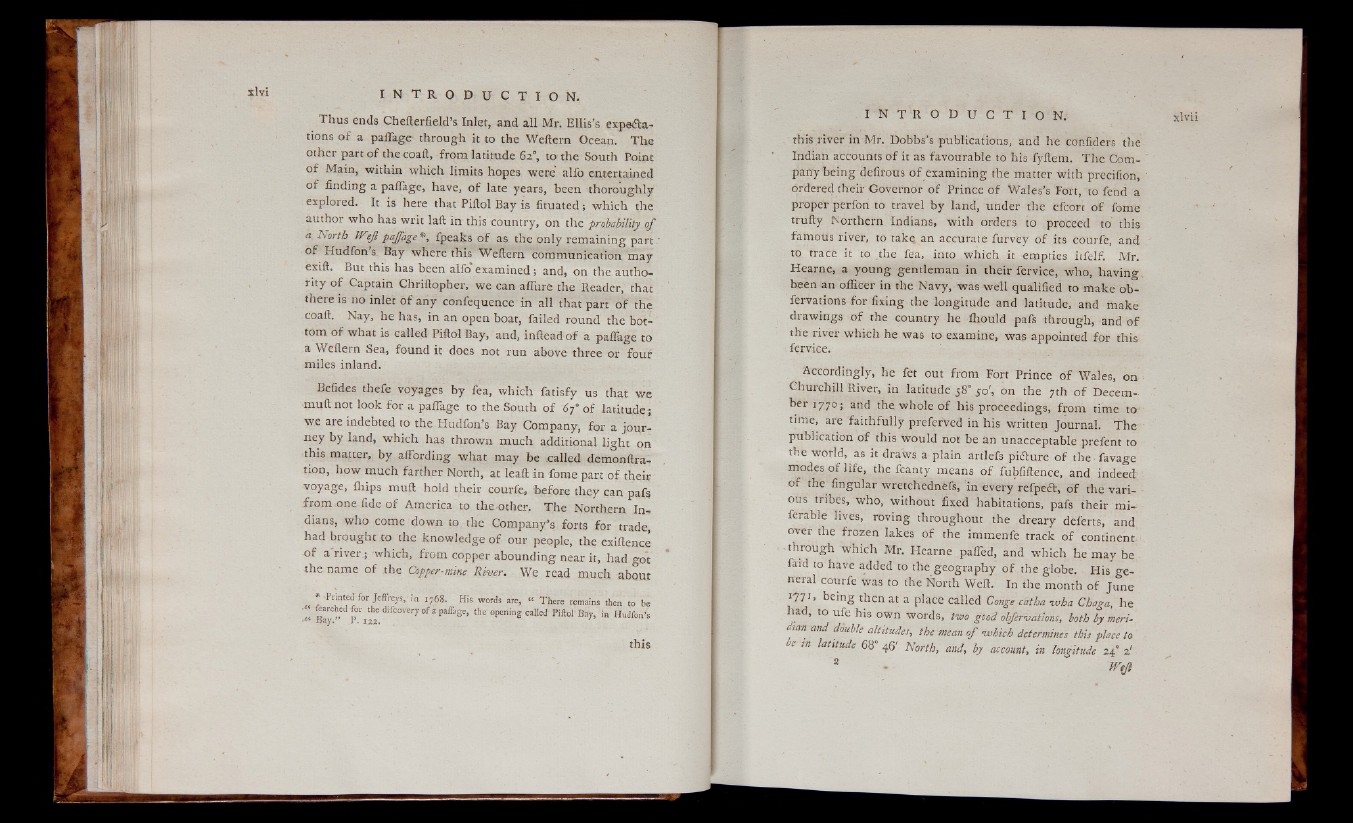
Thus ends Che fieri! cl cl’ s Inlet, and all Mr. Ellis’s expectations
of a paflage through it to the Weftern Ocean. The
other part of the coaft, from latitude 62°, to the South Point
o f Main, within which limits hopes were alfo entertained
o f finding a paflage, have, of late years, been thoroughly
explored. It is here that Piftol Bay is fituated; which the
author who has writ laft irr this country, on the probability of
4 Not-th Wcjl pajfage *, fpeaks of as the only remaining part ‘
o f Hudfon’s Bay where this Weftern communication may
exift. But this has been alfo‘ examined ; and, on the authority
o f Captain Chriftopher, we can afliire the Reader, that
there is no inlet o f any confequence in all that part' of the
coaft. Nay, he has, in an open boat, failed round the bottom
of what is called Piftol Bay, and, inftead of a paflage to
a Weftern Sea, found it does not run above three or four
miles inland.
Befides thefe voyages by fea, which fatisfy us that we
muft not look for a paflage to the South of 6 f of latitude;
we are indebted to the Hudfon’s Bay Company, for a journey
by land, which has thrown much additional light on
this matter, by affording what may be called demonftra-
tion, how much farther North, at leaft in fome part of their
voyage, iliips muft hold their courfe, before they can pafs
from one fide of America to the other. The Northern Indians,
who come down to the Company’s forts for trade,
had brought to the knowledge of our people, the exiftence
o f a river ; which, from copper abounding near it, had got
the name of the Copper-mine River. We read much about
^Printed for Jeffreys,; in 1768. His words are, “ There remains then to be
•« fearched for the difcovery of a paffage, the opening called Piftol Bay, in Hudfon’s
Bay.” P. 122. ’ ,
this
this river in Mr. Dobbs’s publications, and he confiders the
Indian accounts of it as favourable to his fyftem. The Company
being defifous of examining the matter with precifion,
ordered their Governor of Prince of Wales’s Fort, to fend a
proper perfon to travel by land, under the efcort of fome
trufty Northern Indians, with orders to proceed to this
famous river, to take an accurate furvey of its courfe, and
to trace it to the fea, into which it empties itfelf. Mr.
Hearne, a young gentleman in their fervice, who, having
been an officer in the Navy, was well qualified to make ob-
fervations for fixing the longitude and latitude, and make
drawings of the country he fliould pafs through, and o f
the river which he was to examine, was appointed for this
fervice.
Accordingly, he fet out from Fort Prince o f Wales, on
Churchill River, in latitude 58° yo', on the 7th of December
1770; and the whole of his proceedings, from time to
time, are faithfully preferred in his written Journal. The
publication of this would not be an unacceptable prefent to
the world, as it draws a plain artlefs picture o f the favage
modes of life, the fcanty means of fubfiftence, and indeed
of the fingular wretchednefs, in every refpedf, of the various
tribes, who, without fixed habitations, pafs their mi-
ferable lives, roving throughout the dreary deferts, and
over the frozen lakes of the immenfe track of continent
■through which Mr. Hearne pafied, and which he may be
faid to have added to the geography of the globe. His general
courfe was to the North Weft. In the month of June
1-771, being then at a place called Conge catha voha Chaga, he
had, to ufe his own words, two good obfervdtions, loth by meri-
wri'and double altitudes, the mean of •which determines this place ta
be in latitude 68° 46' North, and, by account, in longitude 24’ 2'
s * ¡m